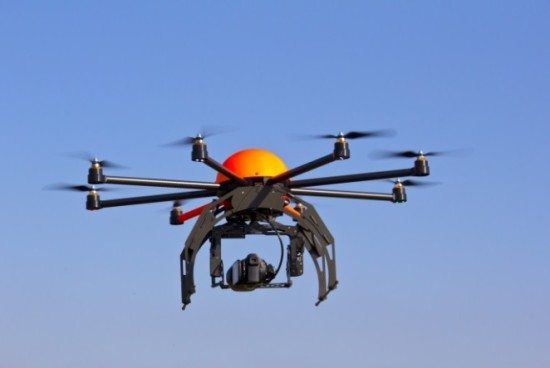By definition, drones are unmanned aerial vehicles. A drone can be controlled remotely by an operator or installed with an automated function. While their popularity in the civilian population has soared only recently, drones have been around for decades. In fact, one of the earliest drones was used by the U.S. in Vietnam. Currently, the government continues to employ drones to carry out surveillance and to fight terrorism.
The use of drones is not restricted to the military. Businesses are looking to drones for advantages to rise above their competition. Amazon is one of the pioneers in this niche with its impending Amazon Prime Air program. According to the company, the program aims to deliver packages within 30 minutes or less, but the service is still on hold until they get the approval of the government.
Even private individuals can acquire or build their own drones. Some of these individuals have taken drone customization seriously, with private drones having a growing following. Privately owned drones are usually deployed to take photos of landscapes, nature, and even special events – with the awe inspiring vantage point from the sky. In this sense, drones are cool and fun, but they can also be used unscrupulously, hence the rising debate about these unmanned vehicles and privacy.
On the one hand, there are pure hobbyists who have a passion for drones. Cliff Baldridge of Santa Barbara is an expert in this niche, among other things. He has a list of tech-related achievements to his name and has been playing with remote controlled vehicles for decades. According to Mr. Baldridge, he only uses his drones for private purposes – and good ones, too. He operates the Santa Barbara Arts TV channel on YouTube, where he uploads aerial footage of the area – all taken by his drone.
Just like some other drone aficionados, Mr. Baldridge has attached a GoPro to his AR Drone 2.0. The HD camera is popular among photographers who take videos while engaging in adventurous experiences – extreme biking, skydiving, underwater diving, and so on. In a similar way, Mr. Baldridge uses his modified drone to take aerial photos and videos to showcase the beauty of Santa Barbara. Without the drone, it would be impossible to capture images from high above the city.
So what’s the issue with private drones?
Mr. Baldridge may have only good intentions, but according to Michael Ehline, a personal injury lawyer, there are potential legal complications in relation to privacy. The first is the Federal Aviation Administration, whose jurisdiction covers drones. The laws regarding use of drones are not clear-cut as of yet, and private use may be curtailed in the future.
Then there is the potential invasion of privacy – whether intended or not – which is covered by the penal code. The bottom line is that California law allows taking photos and videos in public unless private individuals can prove that reasonable expectation of privacy is violated.
Indeed, who is to say that if a drone “accidentally” takes footage of people sunbathing in their backyard is not an invasion of privacy? The same thing applies to people who are enjoying a day at the park and are not aware that they are being filmed.
Government drone regulations are not quite public knowledge, but there are regulations governing private drone usage. Some of these are as follows:
Maximum height of 400 feet
Private, or recreational, drones cannot be flown above 400 feet from the ground. Additionally, the drones have to be used in locations that are sufficiently far from populated areas. What is sufficiently far is not that clear. These rules are included in a 1981 circular.
The aircraft has to be kept in sight.
This means that a private drone operator must always see his drone in the air. The reasoning behind this is to avoid harming others, which can result in charges of recklessness.
Are these regulations being followed today?
If Mr. Baldridge’s experience is anything to go by, the answer is no. The hobbyist himself says that while there is that expectation of privacy in public, to his knowledge, there have been no expressed concerns about privacy in Santa Barbara – at least in terms of drones. He adds that he is referring specifically to cases wherein his drones fly more than 50 feet in the air – about the height of a palm tree – and not low enough to be able to “peek” into someone’s home. Mr. Baldridge may very well be correct in saying that as evidenced by District Attorney Dudley’s statement that there are no current lawsuits involving the use of private drones.
Drones and law enforcement
While the restrictions on individual use of drones are heavily dependent on privacy, in general, there seems to fewer questions about recording law enforcement, especially when they are apprehending someone. We’ve seen evidence of this in recent times.
With this in mind, Mr. Ehline raises the possibility of more lax rules on the use of government drones while at the same time more restrictive rules for private drones. He leans toward the notion that, in the foreseeable future, this will be the situation, especially considering the fact that California legislators have a pro-government bias.
Corollary to this, Mr. Ehline believes that the use of drones by law enforcement can easily lead to invasion of privacy. An excellent example is the experience of Senator Dianne Feinstien, who is the chairwoman of the Senate Intelligence Committee. While she used to support the NSA surveillance program, her personal experience raised questions for her about her stance. In an interview on 60 Minutes, she shared that while a demonstration outside her home was being held, she looked out of her window only to see a drone right in front of her.
This brings us back to concerns such as the benefits of drones and when their use can be categorized as stalking or invasion of privacy.
Another potential privacy violation is the fact that law enforcement can easily abuse drones to conduct surveillance without a warrant.
Despite his misgivings, Mr. Ehline also highlights the benefits of drone use to monitor law enforcement behavior. While dashboard cameras are already in use, he believes that using drones can be more beneficial to monitor law officers without them being able to manipulate what is being recorded. This could help officers to keep within the boundaries of the law.
To back this up, Mr. Ehline points to the situation in Rialto, CA, where officers were regularly monitored while on duty. This resulted in 80 percent less instances of police misconduct.
The state of drone use and regulations
At present, it is common knowledge that both the government and private citizens are using drones, whatever their purposes may be. What remains to be seen is how and when legislation regarding drone use is going to be finalized. Current use is known, but rules and legal implements – down to the nitty gritty details – are blurry at this point.
There is a deadline for the FAA to establish these rules – September 2015, but reports say that the agency is behind schedule. Specific to California, AB 2306 is a pending drone-related bill that the California Assembly is reviewing. This bill focuses on the details of how drones will be restricted in terms of invasion of privacy.
For now, private drone enthusiasts and private citizens concerned about their privacy will have to wait and see how the government rules in this matter.
[su_box title=”About Michael Ehline” style=”noise” box_color=”#336588″] Michael Ehline is a California personal injury attorney at Ehline Law Firm PC. He is an author and contributor to major publications throughout the world that write about consumer safety, and recovery of monetary damages for negligence. He also teaches individuals how to become lawyers by “reading for the law,” and is a founder at the Circle of Legal Trust, an international fraternity of lawyers helping lawyers comply with search engine quality guidelines. He is heavily involved in social media and can be found curating content on Google+.[/su_box]
Michael Ehline is a California personal injury attorney at Ehline Law Firm PC. He is an author and contributor to major publications throughout the world that write about consumer safety, and recovery of monetary damages for negligence. He also teaches individuals how to become lawyers by “reading for the law,” and is a founder at the Circle of Legal Trust, an international fraternity of lawyers helping lawyers comply with search engine quality guidelines. He is heavily involved in social media and can be found curating content on Google+.[/su_box]
The opinions expressed in this post belongs to the individual contributors and do not necessarily reflect the views of Information Security Buzz.



